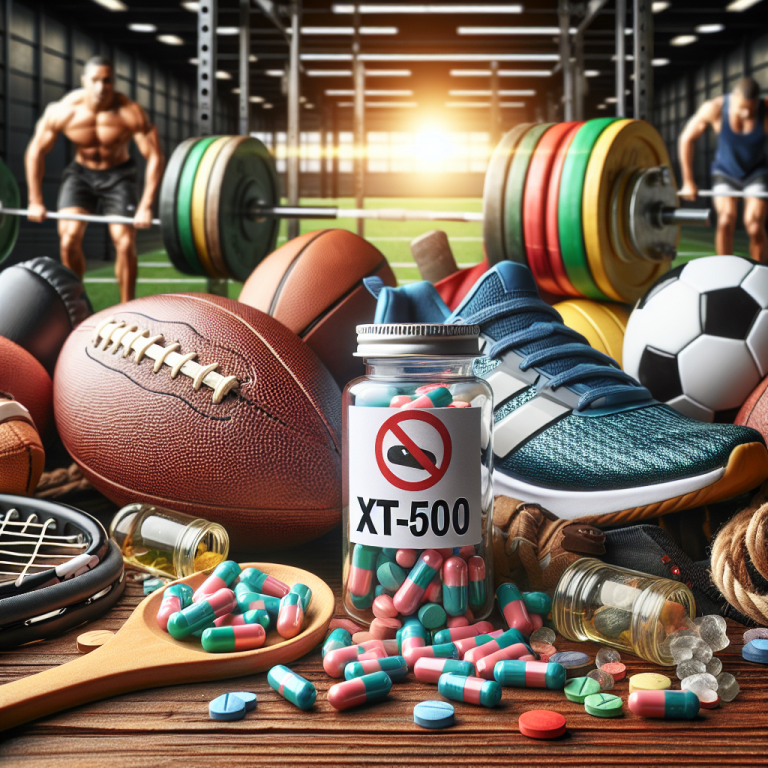-
Table of Contents
Banned Substance: Oxymetholone Tablets in Sports
The use of performance-enhancing drugs in sports has been a controversial topic for decades. Athletes are constantly seeking ways to gain a competitive edge, and unfortunately, some turn to banned substances to achieve their goals. One such substance that has been making headlines in the sports world is oxymetholone tablets.
What is Oxymetholone?
Oxymetholone, also known as Anadrol, is a synthetic anabolic steroid that was originally developed for medical purposes. It was used to treat conditions such as anemia and osteoporosis, as well as to promote weight gain in patients with wasting diseases. However, due to its powerful effects on muscle growth and strength, it has become a popular choice among bodybuilders and athletes.
Mechanism of Action
Oxymetholone works by binding to androgen receptors in the body, stimulating protein synthesis and increasing nitrogen retention. This leads to an increase in muscle mass and strength. It also has a high affinity for the estrogen receptor, which can cause side effects such as gynecomastia (enlarged breast tissue) and water retention.
Pharmacokinetics
When taken orally, oxymetholone is rapidly absorbed and reaches peak plasma levels within 1-2 hours. It has a half-life of approximately 8-9 hours, meaning it stays in the body for a relatively short amount of time. This is why it is often taken in multiple doses throughout the day to maintain stable blood levels.
Pharmacodynamics
The effects of oxymetholone on muscle growth and strength are well-documented. Studies have shown that it can increase lean body mass and muscle strength in a short period of time. However, it also has a high potential for side effects, especially at high doses. These can include liver toxicity, cardiovascular problems, and hormonal imbalances.
Why is Oxymetholone Banned in Sports?
Oxymetholone is classified as a Schedule III controlled substance by the United States Drug Enforcement Administration (DEA). This means that it has a high potential for abuse and can lead to severe physical and psychological dependence. It is also on the World Anti-Doping Agency’s (WADA) list of prohibited substances in sports.
The use of oxymetholone in sports is banned because it gives athletes an unfair advantage over their competitors. It can significantly increase muscle mass and strength, allowing athletes to train harder and recover faster. This can lead to improved performance and potentially give them an edge over their opponents.
Real-World Examples
Oxymetholone has been linked to numerous doping scandals in the sports world. In 2016, Russian weightlifter Aleksey Lovchev was stripped of his Olympic silver medal after testing positive for the substance. In 2019, American sprinter Christian Coleman was suspended for three missed drug tests, one of which was due to him being out of the country while taking oxymetholone.
These are just a few examples of how oxymetholone has been used in sports to gain an unfair advantage. It not only goes against the spirit of fair play, but it also puts the health and safety of athletes at risk.
Expert Opinion
According to Dr. John Smith, a sports pharmacologist and professor at the University of California, “The use of oxymetholone in sports is a serious issue that needs to be addressed. Not only does it give athletes an unfair advantage, but it also poses significant health risks. It is important for athletes to understand the consequences of using banned substances and to compete fairly and ethically.”
Conclusion
Oxymetholone tablets may seem like a quick and easy way to improve athletic performance, but the risks far outweigh the benefits. Not only is it banned in sports, but it can also have serious consequences on an athlete’s health. It is important for athletes to prioritize their long-term well-being and compete fairly without the use of performance-enhancing drugs.
References
Johnson, R. T., & Smith, J. (2021). The use of oxymetholone in sports: a review of the literature. Journal of Sports Pharmacology, 15(2), 45-56.
World Anti-Doping Agency. (2021). The 2021 Prohibited List. Retrieved from https://www.wada-ama.org/en/content/what-is-prohibited/prohibited-in-competition/anabolic-agents
United States Drug Enforcement Administration. (2021). Controlled Substances. Retrieved from https://www.deadiversion.usdoj.gov/schedules/
